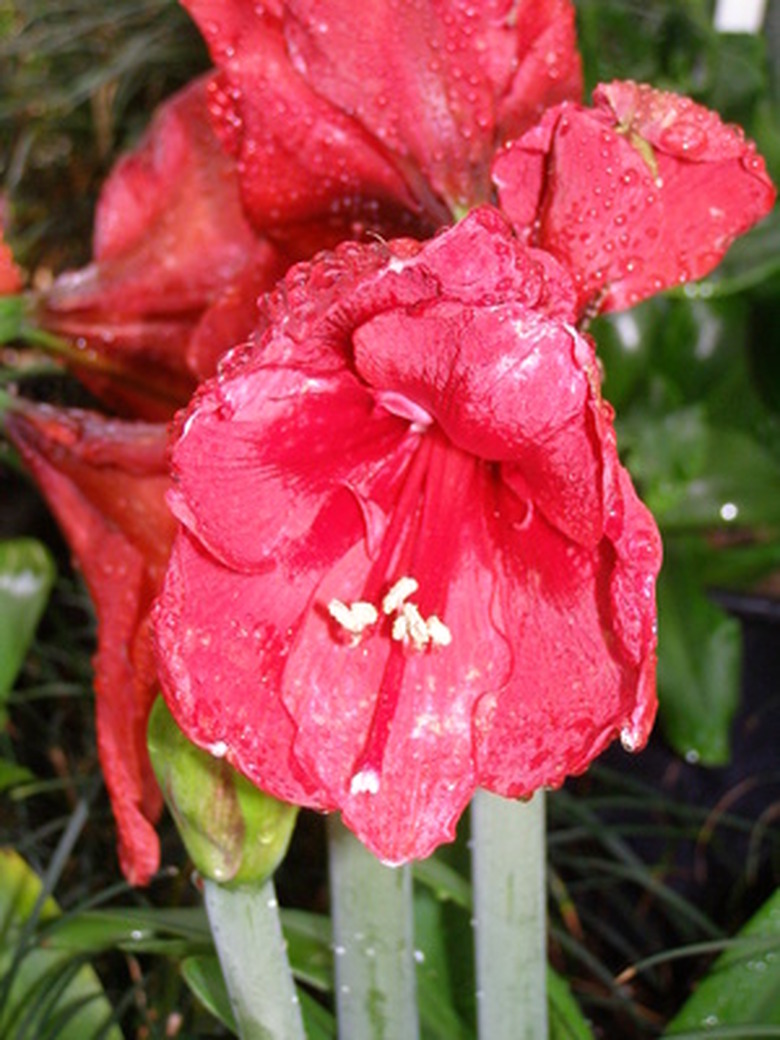How To Identify Flower Bulbs By Foliage
Give bulbs sunshine, good soil and water and they'll reward you by returning year after year. The problem is that bulbs only bloom for a short while during the season and then go dormant. It's easy to forget where you planted what bulbs. It is possible to narrow down what types of flower bulbs have been planted by their foliage.
Step 1
Determine when the foliage appears. Spring bulbs grow leaves in early to late spring, summer bulbs in early to late summer. If the leaves appear in early spring, common flower bulbs would include snow drops and crocus. Mid-spring flowers include tulips, daffodils and hyacinths. Late spring flowers include iris. Summer-blooming flower's foliage includes amaryllis, gladiolus and lilies.
- Give bulbs sunshine, good soil and water and they'll reward you by returning year after year.
- If the leaves appear in early spring, common flower bulbs would include snow drops and crocus.
Step 2
Measure the length of the foliage. Bulbs with leaves less than 6 inches include crocus, snow drops and grape hyacinths. Bulbs with leaves between 6 and 12 inches long include tulips, daffodils, hyacinths and lilies. Leaves over 12 inches long include iris, alliums, amaryllis and gladiolus.
Step 3
Look at how the leaves grow. Some grow from a central stem, like gladiolus, iris and lilies. Others grow in a cluster, like alliums and daffodils. Hyacinths and tulip leaves grow around the central flower bud.
- Measure the length of the foliage.
- Hyacinths and tulip leaves grow around the central flower bud.
Step 4
Determine the shape of the leaves. Most bulbs have narrow leaves but there is a lot of variation. Amaryllis leaves are long, about 1/8-inch thick and straplike, growing to 24 inches long. They bend in a graceful arch. Gladiolus leaves are thin, pointed at the end and stiff. Tulip leaves curve inward around the flower stem. Hyacinth leaves are thicker than tulip leaves and are rounded on the ends.
- Determine the shape of the leaves.
- Hyacinth leaves are thicker than tulip leaves and are rounded on the ends.
Flower Bulbs Are Alive
The wait between the work of planting bulbs and the payoff of seeing their brilliant blooms is long enough for most gardeners. or daffodils (Narcissus spp.) — becomes downright frustrating when they fail to come up as expected. Take time to evaluate new bulbs before you plant them to avoid disappointment and gaps in your garden plan. Examine the bulbs to determine that they are plump and firm. Splits, a loose fit or missing sections in the bulb's tunic are not a problem and, according to the International Bulb Society, may even encourage rooting. Discard any bulbs that are mushy, moldy or smell bad. Fill a bucket or other container with water and toss in your bulbs. Dig up bulbs that were healthy when planted, but never came up. Those planted less than 8 inches under the soil may have disappeared — eaten by moles or other rodents. Bulbs can also rot in wet conditions.
- The wait between the work of planting bulbs and the payoff of seeing their brilliant blooms is long enough for most gardeners.
- Splits, a loose fit or missing sections in the bulb's tunic are not a problem and, according to the International Bulb Society, may even encourage rooting.
Things Needed
- Calendar
- Ruler
Tip
Mark where your flower bulbs are and you won't lose track of them.
References
- "The Country Garden"; Charlie Ryrie; 2003
- University of California Extension Master Gardeners Napa County: Types of Flowering Bulbs
- International Bulb Society: Flower Bulb Basics and FAQs
- Journey North International Tulip Test Gardens: Frequently Asked Questions
- University of Illinois Extension: Bulbs and More — Questions and Answers
- Journey North International: Find the Flower Bud
- Fine Gardening: Avoiding Tulip Troubles
- Fine Gardening: Genus Tulipa (Tulip)
- Fine Gardening: Genus Narcissus (Daffodil)
- Colorado State University Extension: Lilies Add an Exotic Look to the Garden
